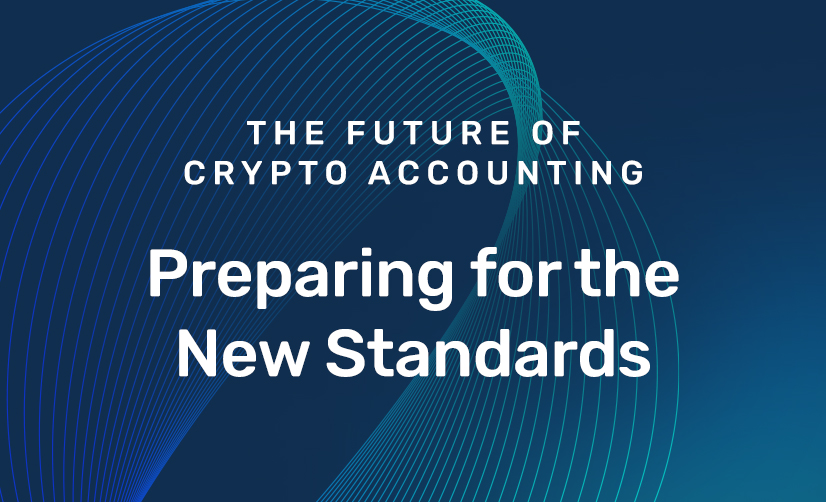Overview
In December 2024, the FASB’s new crypto asset accounting guidance fully goes into effect. Companies who have not already adopted the standard must begin following these new rules in order to stay compliant with US GAAP.
The new guidance requires entities to measure in-scope digital assets at fair value, with changes in fair value recorded in net income. The standard also introduces enhanced disclosure requirements, including significant crypto asset holdings and a reconciliation of the beginning and ending balances of such assets.
In this blog post, we’ll break down the new fair value accounting guidance of digital assets, different fair value impacting scenarios, and discuss how Taxbit’s enterprise-grade digital asset accounting platform helps you stay compliant with the updated accounting guidance.
Fair value guidance for accounting for digital assets
Under previous GAAP guidance, digital assets meeting the definition of an indefinite-lived intangible asset were recognized at cost and subsequently measured using the impairment model which required companies to have complex processes in place to monitor for indicators of impairment.
In the previous accounting model, gains or losses were typically recognized only when the asset was sold or disposed of (i.e., "realized" gains/losses). However, under fair value accounting, the concept of realized gains or losses upon disposition no longer applies under US GAAP, because the changes in value have already been reflected in net income as they occur. In other words, there is no separate calculation of gains/losses upon the sale since fair value adjustments are made continuously. Of course, that calculation is still necessary for tax books, but not for GAAP accounting under the new guidance.
While fair value accounting provides a more accurate, real-time view of an entity’s digital asset holdings, it also introduces new challenges, particularly in tracking these assets at a detailed level. Taxbit’s automated system addresses this need by helping companies efficiently track fair value adjustments and maintain compliance with regulatory requirements.
Lot-level evaluation of digital assets
To comply with the new fair value guidance, entities must track digital assets individually at the lot level. This means that every acquisition, along with its purchase details and timestamp, must be recorded and monitored separately for fair value changes. Lot-level tracking ensures precise accounting of value fluctuations and accurate financial reporting.
Manually tracking lots can be an overwhelming task, especially in the fast-moving world of digital assets, where transactions occur frequently and asset values fluctuate rapidly. Failure to maintain adequate lot-level records can lead to inaccurate fair value adjustments, which poses significant risks to compliance and reporting accuracy.
Taxbit’s platform automates lot-level tracking, ensuring that each acquisition is distinctly recorded, monitored, and adjusted for fair value changes—eliminating the risk of errors from manual processes.
Understanding different scenarios for fair value adjustments:
There are four key scenarios to consider when tracking fair value adjustments:
*The period refers to the frequency at which Fair Market Value (FMV) adjustments are recorded. Taxbit’s Fair Value reports offer flexibility, allowing adjustments to be made on a daily, monthly, quarterly, or yearly basis.
- Held Asset from Previous Period to Current Period (HODL): If a company acquired an asset in a prior period and still holds it at the end of the current period, the fair value adjustment reflects the price change from the previous period's end to the current period's end.
- Acquisition of Asset during the Period: When a company acquires an asset partway through the period (e.g., January 15) and still holds it at the end of the period (e.g., January 31), the fair value adjustment is based on the change in value from the acquisition date (January 15) to the period-end date (January 31). This represents the fair value adjustment for the "relevant life" of the asset for that period.
- Sale of Asset During the Period: If an entity purchases an asset in December and sells it during the current period (e.g., January 15), it must record a fair value adjustment ("true up") for the period from January 1 to January 15. While gains or losses are typically booked at the time of sale for tax purposes, under the fair value model, no gain or loss is realized at disposition. Instead, only the change in fair value during the relevant life of the lot in the current period is reflected in the current period earnings.
- Acquired and Sold Asset During the Period: If an asset is both acquired and disposed of within the same period, the fair value adjustment is limited to the asset’s "relevant life" during that period.
Lot-level fair value adjustment tracking in Taxbit:
The most critical component of fair value accounting for digital assets is tracking fair value adjustments at the lot level. Taxbit’s platform simplifies this process by automatically segregating transactions by lot, maintaining an accurate inventory of all transactions and holdings across reporting periods. With Taxbit's Fair Value Lot Level Report, users can easily track and manage their crypto assets and get the relevant fair value adjustment information they need, ensuring compliance with the latest fair value accounting standards.
Prepare for New Normal in Digital Asset Accounting with Taxbit:
With the FASB’s new crypto asset fair value accounting guidance in place, accurate lot-level tracking of fair value adjustments is not just a best practice—it’s a requirement. Taxbit’s accounting platform empowers companies to navigate this complex landscape effortlessly by providing precise and automated fair value reporting and ensuring full compliance with the FASB’s latest accounting standards. Contact our team today to learn more about Taxbit’s accounting platform.
.png)


